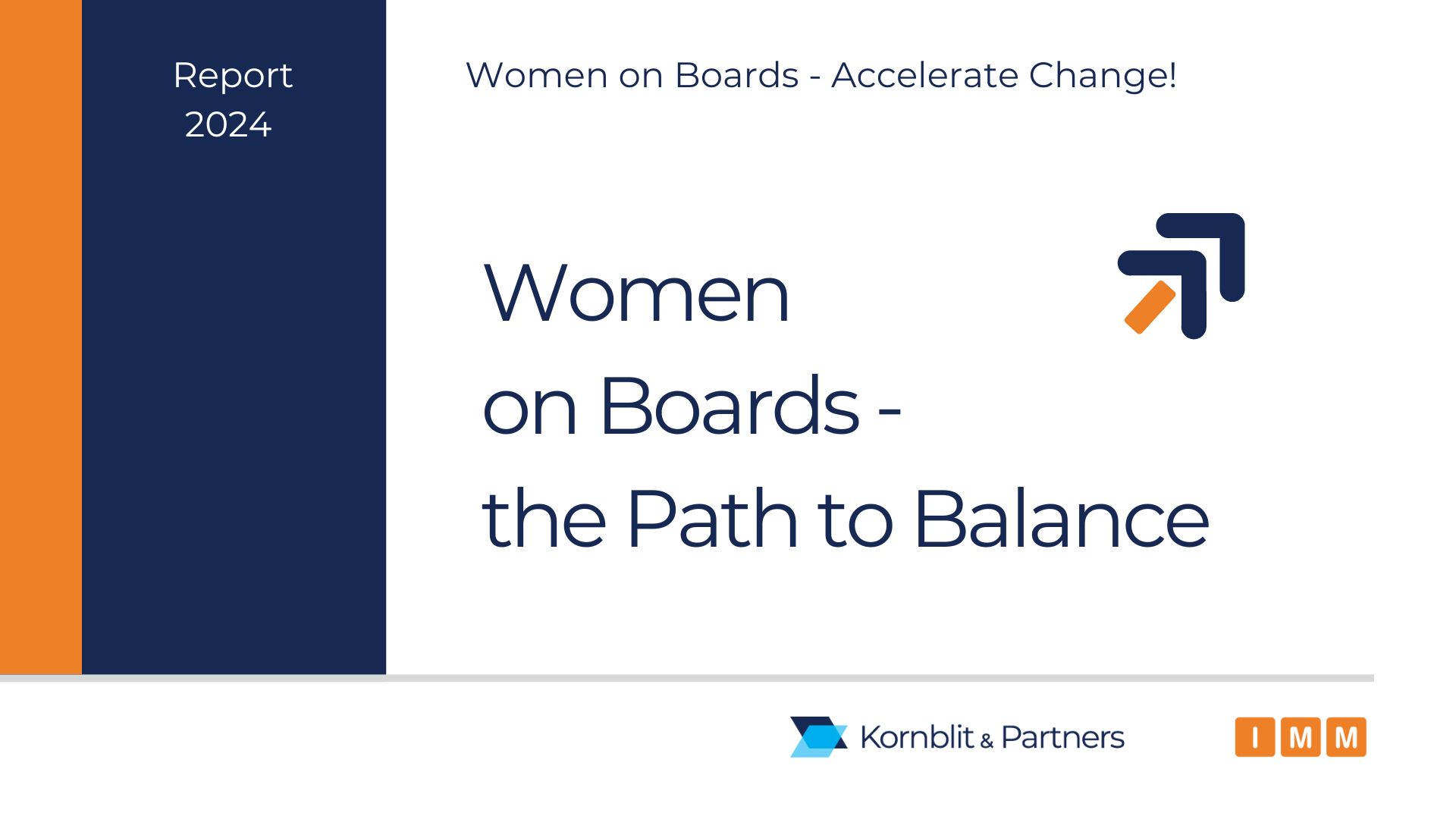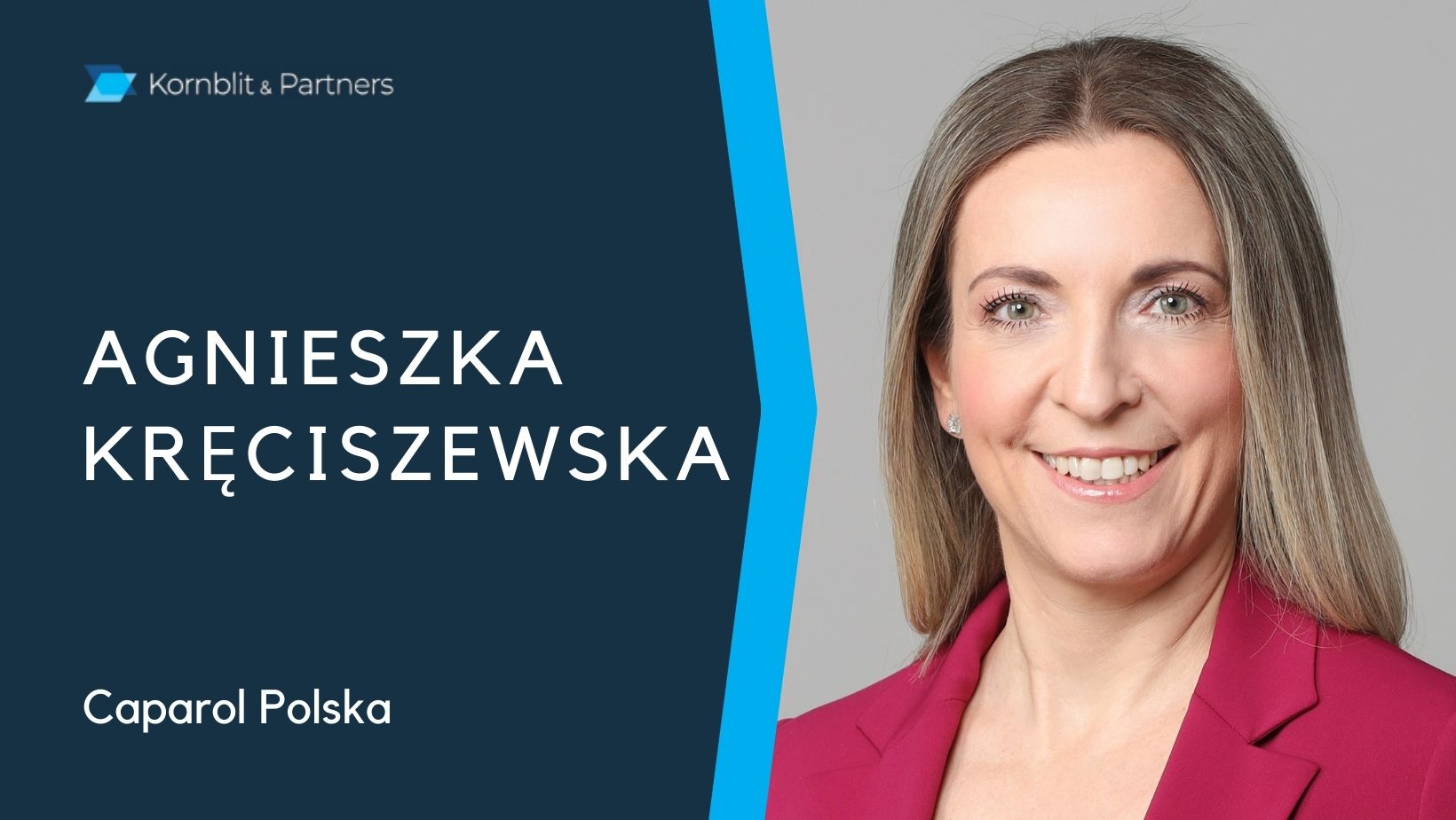
The report addresses the most pressing questions, including:
- How to overcome the biggest obstacles for women pursuing professional careers;
- How to effectively assist women in accessing decision-making positions;
- How to shorten the path to achieving gender balance at the top of organizations, extending beyond companies covered by the EU’s “Women on Boards” directive.
Key findings
There are only two years left for companies covered by the EU directive on improving gender balance to increase the presence of women on boards and supervisory boards. The results of the joint study by Kornblit & Partners Executive Search and the Institute of Media Monitoring leave no doubt: this will not be easy without removing barriers that limit women’s career development.
The authors of the report “Women on Boards – the Path to Balance” point out recommended changes to increase women’s representation on boards.
To create an environment that enables women’s professional development, employers should ensure equal opportunities during recruitment and promotion processes and facilitate the balance between professional and social roles. This is an urgent task, especially for listed companies, which according to the EU “Women on Boards” directive, should have at least 33% of the underrepresented gender in their boards in two years.
Experts from Kornblit & Partners Executive Search and the Institute of Media Monitoring examined the issue from several perspectives. Polish female leaders – CEOs, board members, and women in decision-making positions – were invited to share their experiences and opinions. The media discussion on increasing women’s participation in corporate governance over the past two years was also analyzed.
How to remove barriers for women
Based on the conclusions from interviews and media information, the report’s authors list actions that can shorten the path to achieving gender balance in corporate governance.
- There is a need for a change in social expectations and ingrained thinking patterns about the roles of women and men in the family. Thus, it is essential to dismantle biases at various organizational levels, particularly harmful at the management level where entrenched stereotypes are perpetuated by decision-makers.
- A supportive work environment, especially actions by supervisors, is crucial in shaping women’s leadership. Men, who still dominate key positions, play a significant role in decisions about promotions and career development.
- Tools effective in reducing the gender representation gap include responsible recruitment based on a balanced talent pool, support for managers in identifying potential female leaders, and helping women develop their leadership competencies. Besides ensuring equal access to development opportunities, widespread structural support is necessary – from fundamental elements like labor market legislation that increases women’s activity and career development, to training and mentoring programs in organizations, and procedures that facilitate balancing social and professional roles and supporting mothers returning to work.
The female leaders confirm that the doors to boards are not closed but are still very heavy for women. They agree that women already have the competencies, so now the most important actions within organizations are to ensure equal opportunities during recruitment and adequate support for women pursuing professional careers. They advocate removing hidden inequalities to avoid fighting negative effects of disparities later – comments Magdalena Tokaj Phd, Study Coordinator at Kornblit & Partners Executive Search.
In light of the analysis by Kornblit & Partners Executive Search and the Institute of Media Monitoring, quotas and imposed directives will do little for lasting change if company values do not change. Legislative changes are insufficient but helpful in indicating direction. Thus, in promoting the topic of increasing women’s representation in decision-making positions and combating gender discrimination, the supportive role of other market participants, including recruitment firms and media, is important.
The crucial role of responsible recruitment in increasing women’s representation on boards
Recruitment firms should provide clients with appropriate advisory services and effective support in reaching candidates ready to take on managerial roles, including board and supervisory board positions. These firms can also educate the market about responsible, transparent recruitment and the benefits of gender-balanced representation at the top of companies. They should adhere to the highest ethical standards in building diverse talent pools and conducting competency-based recruitment processes.
No company focused on business success thinks solely in terms of achieving quotas but rather on the experience, competencies, and potential candidates can bring in the long run. We specialize in bringing women into boards and supervisory boards, so we see how market leaders are changing their approach to recruitment. There is no shortage of women ready to take on board roles, but the current challenge for many organizations is building a gender-diverse talent pool, as they struggle to independently reach candidates with the right competencies. Balancing the candidate list in the recruitment process is essential to creating the best talent pool, enabling women and men to compete fairly for positions – highlights Marzenna Drzewiecka, Vice President of Kornblit & Partners Executive Search.
The vital role of media in reaching decision-makers
Media play an important social role by highlighting the economic and social arguments for increasing the participation of women in decision-making positions. Including women in the media discussion is crucial. Influential media outlets, which reach those with the most significant impact on organizational change, are particularly influential.
Researches consistently show that business remains a male domain and women continually face the glass ceiling. Therefore, it is crucial for the media, which significantly shapes social debate and cultural changes, to address equality and increasing women’s participation in top organizational roles. Given the slow progress in this area, media still have much to do in building social awareness and promoting diversity at managerial levels – comments Monika Ezman, Board Member of the Institute of Media Monitoring.
More to learn from the Report:
- The path to leadership through the eyes of female leaders: competencies that best enable women’s development and ways to balance social and professional roles.
- Gender balance on boards: examples of best practices for equalizing opportunities successfully implemented by organizations in various industries in Poland.
- Women’s leadership in public: media outlets that dedicated the most coverage to promoting women and increasing their representation on boards.
Media Patron of the Report:
About the Report:
The report “Women on Boards – the Path to Balance” by Kornblit & Partners Executive Search and the Institute of Media Monitoring is based on qualitative interviews and media content monitoring from press titles and online portals. Interviews were conducted between 2023 and 2024 as part of the Kornblit Talks series, inviting 20 Polish female leaders (CEOs, board members, women in high decision-making roles in organizations, managing companies domestically and internationally) to share their experiences and opinions on shaping women’s leadership paths. All interviews are available here: KORNBLIT TALKS.
The media analysis covers over 1600 newspapers and magazines and nearly 20,000 online portals. The analysis period is from January 1, 2022, to April 30, 2024. The study examined media publications about women in managerial positions, particularly in the context of implementing the EU directive known as “Women on Boards.” The analysis also included materials addressing women’s leadership and increasing their participation in business. Detailed information about the media monitoring scope is available on the IMM website.
About the Authors:
Kornblit & Partners is an executive search agency that has supported clients in recruitment and transformation processes since 1999, taking full responsibility for comprehensive recruitment. The firm specializes in bringing women into boards and supervisory boards, combining a data-driven approach with the knowledge of experienced headhunters who have an in-depth understanding of their clients’ markets and business models. Kornblit & Partners has successfully completed over 1,100 executive search recruitment processes and hundreds of bespoke HR projects. Kornblit & Partners is the only Polish company listed in the Top Emerging Executive Search Europe 2023. It is also the initiator of Kornblit Talks, an educational project promoting workplace diversity and responsible talent management.
The Institute of Media Monitoring has been a leader in media message analytics in Poland for over 24 years. Since 2008, it has also offered its services in Romania under the mediaTRUST brand. IMM supports companies, institutions, and personal brands in effectively measuring and reporting external communication results, planning strategies, and preventing reputation crises. The company integrates publication results from all types of media into one tool, including advertising. IMM provides qualitative-statistical reports and analyses, serving thousands of clients domestically and internationally – multinational corporations, small businesses, public institutions, non-governmental organizations, PR agencies, marketing agencies, and personal brands. IMM’s monitoring covers press, radio, television, online portals, social media, as well as podcasts and video channels.






